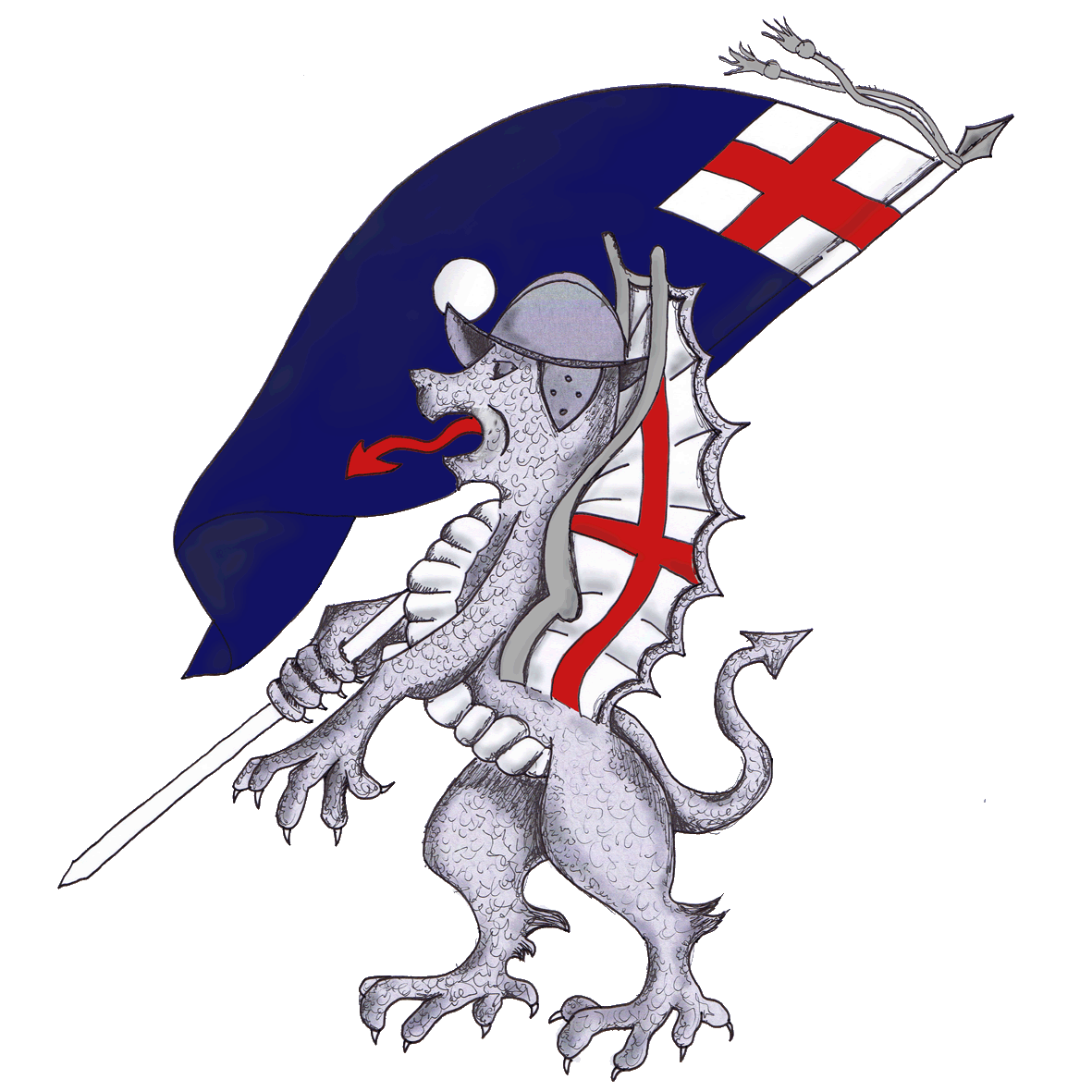The History of the Cittie of London Trayned Bandes
(1572-1647)
In the absence of a regular army, the trained bands, founded in 1572 as part of Elizabeth I's efforts to modernise the militia, were the only permanent military units in England. While the county bands were often poorly organised, ineptly officered and infrequently trained, the London bands were not, although enthusiasm did wax and wane considerably over the years of their existence (1572 - 1647).
The Regiments
Before the Civil War there were four London regiments - the North, South, East and West - comprising a total of 6,000 men in 20 companies. In 1642, as relations between king & parliament worsened, the bands were re-organised into 40 companies of 8,000 men in six regiments named the Red, Blue, Green, White, Orange and Yellow after the colour of their regimental flags, or "trophies", as they were known to London militiamen. The following year, after the King's unsuccessful attempt to seize The Capital, three more trained band and five "auxiliary" regiments were raised bringing the whole force to around 20,000 men. This large army, controlled by the mayor and the city aldermen, held London for parliament throughout the first Civil War (1642 - 1646) and contributed brigades of foot to parliament's field armies. The establishment and subsequent rise of the New Model Army after 1645 greatly reduced the significance of the bands and they gradually melted away. Today, only the Honourable Artillery Company, a ceremonial unit of ex-soldiers, remains as a legacy of the glory days of London citizen’s solders.
Training
In their heyday under the Exact Militia Programme of Charles I, they carried with them much of Mercantile London's prestige and ceremonial processions and "guards" were an important part of their duties. Military training was not, however, neglected, the bandsmen being obliged to meet for drill once a month and to attend occasional major field exercises and equipment inspections. Some companies trained more than others according to local levels of enthusiasm and the time of year; drills in winter or on days of foul weather being understandably unpopular.
Voluntary Associations
The competence and appearance of the London Trained Bands was much enhanced by the formation, after 1611, of voluntary associations of gentlemen enthusiasts who read & wrote military texts and met to discuss new ideas as they practiced drill in various "yards" throughout the city. The most famous of these were The "Martial Yard" and the "Society of the Artillery Garden". Another popular group was the "Gentlemen of the Private and Loving Company of Cripplegate". Many of these stylish fellows were also officers and indeed soldiers in the trained bands and much of their enthusiasm was passed on to the men.
Uniformity
There appears to have been no uniform for the bands, the members wearing their normal civilian clothing which would have reflected the fact that the bands were drawn from those petty bourgeois - shopkeepers, tradesmen & merchants - able to bear the cost of buying their own arms. Some of the wealthier soldiers wore "trained bande buffe" - a type of simple buffcoat with cloth sleeves. Amongst some auxiliary regiments stationed at Abingdon in 1644/5 there is evidence for uniform Blue coats being ordered by the colonel but this was done mainly to keep the soldiers warm during the winter and was probably not general practice.
Weapons & Equipment
Weapons and equipment conformed to statute laid down by the Privy Council. The following description is from the 1638 issue of "Directions for Musters".
The Pikeman
"Must be armed with a pike seventeen feet long, head and all; the diameter of the staff to be one inch 3/4, the head to be well steeled, 8 inches long, broad, strong and sword-pointed; the cheeks 2 foot long, well riveted; the butt end bound with a ring of iron, a gorget, back, breast, tassets and head piece, a good sword of 3 foot long, cutting and stiff pointed with girdle and hangers".
The Musketeer
"Must be armed with a good musket, the barrel four foot long, the bore of 12 bullets in the pound rowling in, a rest, bandolier, head-piece, a good sword, girdle and hangers".
In practice, many pikes were cut down for ease of handling to around 13 or 14 feet. As cavalry had left off using lances in the early part of the 17th century, there was hardly the need for pikes to be full length. As for musketeers, the habit of wearing helmets on campaign had virtually died out by the time of the civil war, broad brimmed felt hats or more usually "Monmouth" or "Montero" caps being much preferred. Another development for musketeers was the gradual adoption of shorter, lighter muskets after 1643, which had the effect of lessening the use of forked, rests.
On Campaign
On the march, armour was usually stowed in carts. Wealthier soldiers were known to hire peasants to carry their arms for periods of time. In an era before the regular supply of tents, field rations and water bottles, open field campaigning could be very tough, particularly if billets could not be secured at the end of a day's march and the home loving, comfortably off bandsmen did not relish it, deserting profusely if the weather turned bad or they thought they had been "out on Loan" long enough. Despite this they proved of great benefit to the parliamentary cause, as their regiments were large, well officered and usually fought well. More significantly, they fortified and strongly garrisoned London, making it a very difficult proposition for assault by the King's army and indeed, after their foiled attempt of 1642, the Royalists were never again in a position to take the city by storm or siege.
Article contributed by Steve Rabbitts

